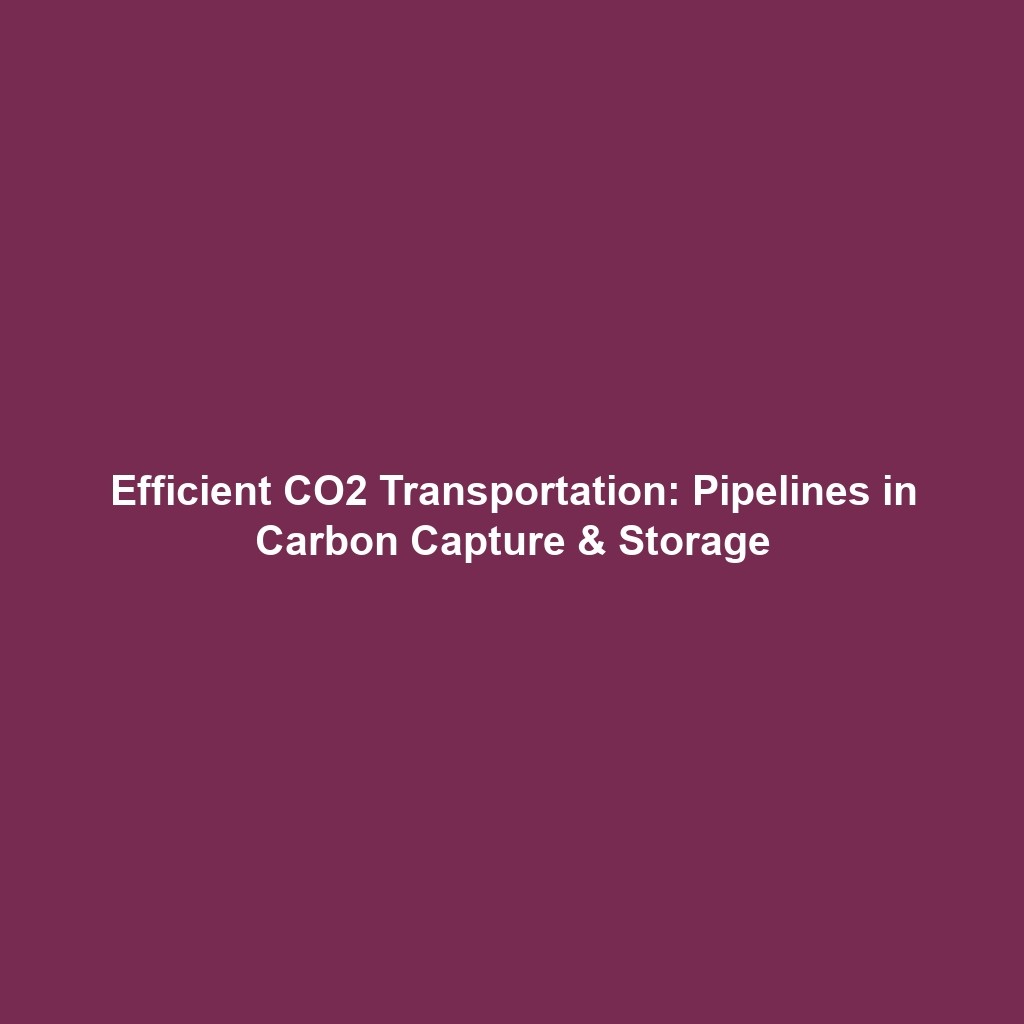Decarbonization in Steel and Cement Through CCS Technologies
Category: Carbon Capture & Storage (CCS)
Topic: Industrial sectors, including steel and cement, are exploring CCS as a way to decarbonize and meet regulatory requirements.
Introduction
As global efforts to combat climate change intensify, industrial sectors such as steel and cement are at the forefront of initiatives aimed at reducing carbon emissions. They are exploring Carbon Capture and Storage (CCS) as a vital strategy to decarbonize their operations and comply with increasingly stringent regulatory requirements. The significance of CCS within these sectors is not only vital for meeting global climate targets but also crucial for the sustainability of industries that contribute greatly to greenhouse gas emissions. This article delves into the transformative potential of CCS technologies in steel and cement industries.
Key Concepts of CCS in Industrial Sectors
Understanding the principles of Carbon Capture and Storage is essential for grasping how it can benefit sectors like steel and cement. The following key concepts are crucial:
- Carbon Capture: The process of capturing carbon dioxide (CO2) emissions produced from industrial processes before they reach the atmosphere.
- Carbon Storage: The long-term storage of captured CO2 in geological formations or other storage mediums to prevent its release into the atmosphere.
- Regulatory Compliance: Adopting CCS technologies to meet local, national, and international regulations aimed at reducing carbon emissions.
Applications and Real-World Uses
The application of CCS technologies in the industrial sectors of steel and cement is rapidly gaining traction. Here are significant real-world applications:
- Steel Manufacturing: Companies are implementing CCS solutions to capture emissions produced during iron ore reduction processes.
- Cement Production: The adoption of CCS in cement kilns helps in significantly reducing CO2 emissions from thermal processes.
- Pilot Projects: Several pilot projects worldwide have demonstrated the feasibility of CCS in both sectors, showcasing how emissions are captured and utilized in various applications.
Current Challenges
Despite the potential of CCS, several challenges hinder its widespread adoption in industrial sectors:
- High Implementation Costs: The initial investment in CCS technologies can be prohibitively expensive for many companies.
- Infrastructure Limitations: The existing infrastructure may not be compatible with CCS systems, necessitating substantial upgrades.
- Regulatory Uncertainty: Fluctuating regulations can create a challenging environment for investment in CCS technologies.
Future Research and Innovations
Future research efforts and innovations hold the key to overcoming existing challenges and optimizing CCS technologies:
- Advanced Materials: Development of new materials for more efficient CO2 capture processes.
- Direct Air Capture: Research is underway to enhance technologies that capture CO2 directly from ambient air.
- Integration with Renewable Energy: Exploring how CCS can be effectively integrated with renewable energy systems for improved carbon management.
Conclusion
In conclusion, as the steel and cement industries strive to decarbonize, exploring Carbon Capture and Storage (CCS) technologies emerges as a crucial pathway. Addressing the challenges and investing in future innovations can significantly enhance the effectiveness of CCS, aiding sectors in meeting regulatory requirements and global carbon reduction targets. For further reading on CCS technologies, visit our other articles on CCS Technologies and Decarbonization Strategies.









